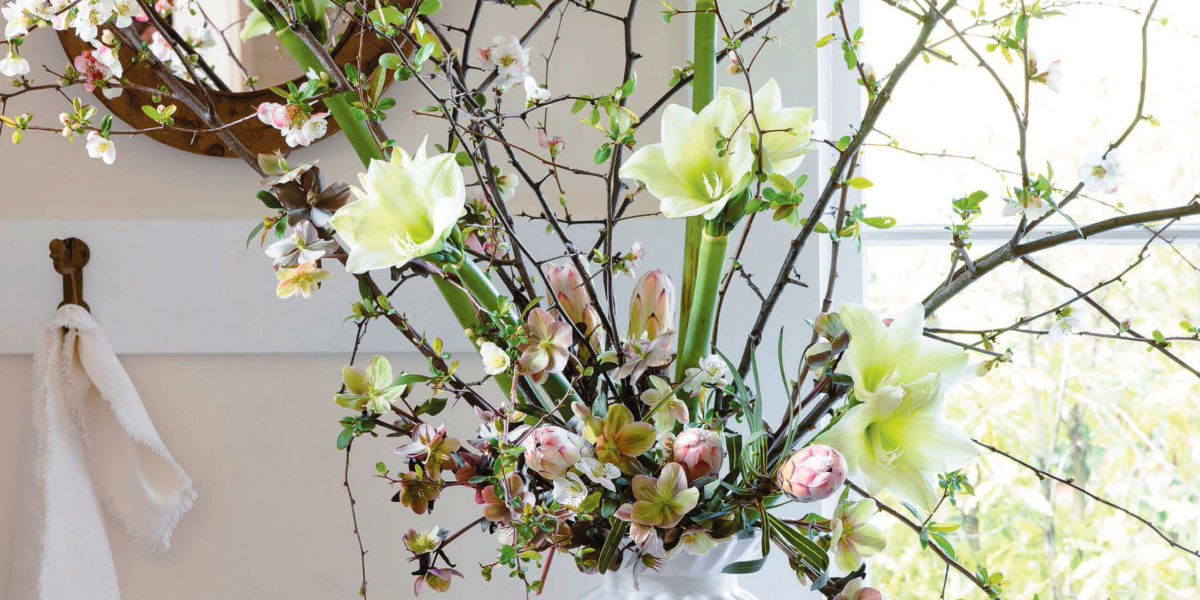
This Floral Arrangement Fast-Forwards Your Home into Spring
A cheerful DIY floral arrangement for the season, from florist Ariella Chezar’s inspiring book

Erin Kunkel
Florist Ariella Chezar is known for a loose and playful style—an aesthetic that took root during her decade-long stint in the San Francisco Bay Area. Yet no matter where you live, her book, Seasonal Flower Arranging: Fill Your Home with Blooms, Branches, and Foraged Materials All Year Round (Ten Speed Press; $25), provides inspiration for how to best bring your yard’s beauty and bounty indoors. This excerpt is a gift for any antsy, cooped-up gardener—and a cheerful and fun activity that’s a harbinger for the warmer days to come.
In winter, here’s one way to fast-forward to spring when you just can’t wait any longer: Clip the budding branches of quince, crabapple, or pear trees, smash the ends, and settle them into a container of just-warm water. Wait a few days, or even a week, and you’ll start to see those buds open up. Some will flower, others will pop out in pale green leaves.
It’s that combination of leggy stems and tiny blossoms that’s so architecturally interesting. Here, I’ve taken inspiration from the pink-white blossoms of flowering quince by adding tall stalks of white or green amaryllis that stand at attention like soldiers.
Next, I add hellebores, so popular these days that you’ll find pots of them blooming in the supermarket. Just snip a few blossoms, and when spring truly arrives, you can plant the rest of the plant in the garden.
Proteas are another supermarket favorite that appear in late winter/early spring. The protea flower is not actually a single bloom but a flowerhead, or inflorescence, made up of many smaller, individual blossoms. Here the flowers are displayed in tight, bud form, but they can open up into dramatic players.
